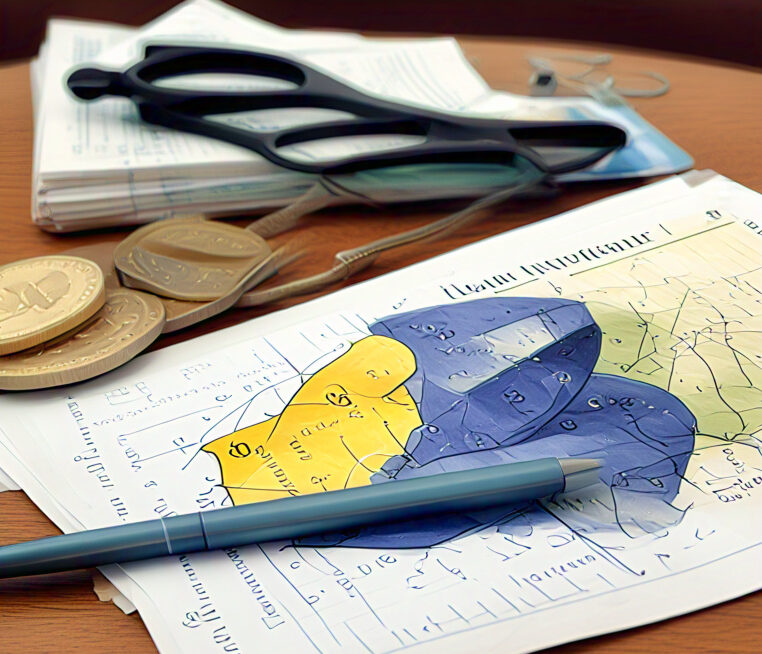Planning for retirement perhaps is one of the major steps anyone could undertake in life. Now, the big question remains-how will you know if you are saving enough? The calculation of your retirement needs becomes quite critical in ensuring that you are well positioned to enjoy your desired lifestyle in your retired phase. This guide will walk you through the process of determining how much money you’ll need for a comfortable retirement, taking into account various factors that can impact your financial future.

Whether just entering one’s career path or within proximity to retirement age, being able to calculate retirement needs is a vital tool for one and all. The following step-by-step will better prepare you to make smart decisions about your savings, investments, and overall financial strategy.
All About Retirement Calculations
Before we begin to discuss any calculations, it’s vital to understand why all of this is so important: Most people grossly underestimate how much they’ll need in retirement and thus experience financial stress, or at best, a lesser quality of life than they might have enjoyed later in years.
The proper retirement calculations allow you to:
- Set realistic savings goals
- Make realistic decisions about how much you can spend today
- Identify appropriate investment strategies
- Plan for healthcare costs
- Not outlive your money
The time it takes to estimate your retirement needs today is a worthwhile investment in future peace of mind and financial security.
Step 1: Estimate Your Retirement Expenses
The first step to determining how much you will need in retirement is to estimate your future expenses. This is the cornerstone of a retirement plan.
Categorizing Your Expenses
Begin by categorizing all of your expenses into one of three groups:
- Essential expenses: These would include things like housing, food, healthcare, and utilities.
- Lifestyle expenses: This is all about entertainment, travel, hobbies, and dining out.
- Contingencies: And put in some emergency money and other surprise expenses.
Adjust for Changes in Retirement Lifestyle
Consider how your expenses may change in retirement:
- Will your housing costs decrease if you’re going to downsize or pay off your mortgage?
- Will your travel go up if you want to see the world?
Will you spend less on work-related expenses such as commuting and professional clothes?
Accounting for Inflation
Remember to account for inflation when determining your future expenses. It’s a good idea to estimate that the rate of inflation averages 2-3% per year.
Example Calculation
Assuming your current annual expenses equal $50,000 and you plan on retiring in 30 years:
$50,000 × (1.03^30) ≈ $121,363
What this means is that, assuming 3% per year inflation, in 30 years, you would need $121,363 to have the same buying power as $50,000 today.
Step 2: Identify Your Sources of Retirement Income
Identify all potential sources of income in retirement. Common sources include:
- Social Security benefits
- Pensions
- Rental income
- Part-time jobs
- Annuities
Estimating Your Social Security Benefits
Log on to the Social Security Administration Web site to get an estimate of your future benefits. Remember these are just estimates based upon your current earnings and likely to change.
Evaluating Pension Plans
If you have a pension, contact your plan administrator to get an estimate of your benefits at various retirement ages.
Other Possible Sources
Consider all other sources of retirement income, such as rental properties, part-time work, or royalties related to intellectual property.
Step 3: Calculate the Gap
With some estimates of retirement expenses and income, you can calculate the gap your retirement savings and investments have to cover.
Annual Gap = Estimated Annual Expenses – Estimated Annual Income
For example, suppose you think you’ll need $80,000 per year in retirement and you predict to receive $30,000 from Social Security and $10,000 from a pension. Your annual gap would be:
$80,000 – ($30,000 + $10,000) = $40,000
The $40,000 is what you will need to generate from your savings and investments each year in retirement.
Step 4: Calculate Your Total Retirement Savings Need
In order to work out how much you need to save in total, there are a few variables to consider:
- How long you estimate your retirement will last
- The return on investment you estimate you will achieve
- How much you estimate you are going to inflate during retirement
The 4% Rule
A good rule of thumb to start with is the “4% rule,” which suggests that, in the general case, you can withdraw 4% of your retirement savings each year with a very low likelihood of depletion in a retirement that could last as long as 30 years.
With this information, you can use that rule to estimate the total need for savings:
Total Savings Need = Annual Gap ÷ 0.04
In our example: $40,000 ÷ 0.04 = $1,000,000
This would mean that you’d have to have $1 million in savings to generate $40,000 a year in retirement income.
Adjust for Your Circumstances
The general rule of 4% is applied to everybody’s situation. You will likely need to adjust given your:
- Anticipated length of time you will be retired
- Risk tolerance/investment strategy
- Health and healthcare expenses
- The amount you would like to leave to your heirs
Step 5: Account for Healthcare Costs
Health care is one of the biggest expenses in retirement, so it requires extra special attention in all of your calculations.
Estimating Health Care Costs
Recent estimates suggest that a couple retiring today at age 65 may need up to $300,000 in savings devoted just to health care costs during their retirement.
In estimating your health care costs, consider the following:
- The level of Medicare coverage and possible premiums
- Supplemental insurance costs
- Long-term care needs
- Prescription drugs
Health Savings Accounts
Pay for retirement healthcare expenses, if you are eligible, using a Health Savings Account. HSAs have triple tax benefits that include the following :
- Tax-deductible contributions
- Tax-free growth
- Tax-free distributions for qualified medical expenses
Step 6: Account for Taxes in Retirement
Do not forget to calculate the taxes in assessing your retirement needs. The general impression of your situation concerning taxes at retirement is complicated and may involve:
- Taxes on Social Security benefits
IRAs and 401(k) RMDs
Capital gains taxes on investment sales
Property taxes
Consider consulting with a tax professional who can help you estimate your retirement tax liability and incorporate it into your projections.
Step 7: Leverage Online Calculators and Tools
Online retirement calculators are significantly more accurate than doing it yourself because they can handle multiple scenarios and variables.
Some of the more trusted calculators include:
T. Rowe Price Retirement Income Calculator Vanguard Retirement Nest Egg Calculator AARP Retirement Calculator Note that they are estimates only to the extent of the information you input in a tool, so make sure you are as comprehensive and realistic using the tools.
Step 8: Run the Scenarios
Your retirement needs calculation should not be just a one-shot affair. Multiple scenarios must be run to account for different probabilities: Early retirement Delayed retirement
- Higher or lower investment returns
- Unexpected health issues or long-term care needs
- Changes in Social Security benefits
By running a number of these scenarios, you can create a more resilient retirement plan, one that will bend rather than break when circumstances change.
Step 9: Calculate Your Required Savings Rate
With an estimate of your total retirement savings need in hand, you’re ready to calculate how much you need to save each month or year to reach your goal.
Things to Consider:
- Your current age
- The age at which you want to retire
- Current savings
- Expected investment return
Sample Calculation:
Suppose today you are 35 years old and you want to retire at 65 years, you require $1 million in savings. You have already saved $50,000 dollars and you expect to earn 7% each year on your investments.
Using a compound interest calculator, you might determine that you would have to save approximately $1,100 per month to reach your goal.
Regular Review and Adjustments to Calculations
Calculating your retirement needs is not a one-time task. You should regularly review and adjust your calculations, particularly after the following major life events:
- Marriage or divorce
- Birth of a child
- Job change or job loss
- Inheritance
- Major health events
At least annually, you should reassess your retirement calculations to ensure that you are still on track toward your goal.
Considering the Services of a Financial Professional
You can do all the calculations of your retirement needs yourself, but the involvement of a financial advisor can bring professional input into areas where you would normally make mistakes.
A financial professional will be able to:
- Help in putting together a comprehensive retirement plan
- Advise on investments best suited to your objectives and risk tolerance
- Advise on how to go about complicated tax situations
- Update your plan in response to changing life circumstances
Look for a financial advisor with a credential such as a Certified Financial Planner (CFP) or Chartered Financial Analyst (CFA); one who has a fiduciary duty to act in one’s best interest.
This is actually the most crucial computation to be done in regard to your retirement needs-so that your future will be financially secure. The steps outlined here will help you to determine how much to save and in what manner to structure the retirement plan.
Key takeaway points:
- Estimate retirement expenses, keeping full consideration for changes in lifestyle and inflation.
- Identify all potential sources of retirement income.
- Compute the gap between expected expenses and income.
- Determine your total savings need with the help of guidelines such as the 4% rule.
- Add on healthcare costs and taxes.
- Utilize online tools and run numerous scenarios.
- Determine how much you’ll need to save each month or year in order to achieve your goal.
- Periodically check your calculations and make adjustments as needed.
- Seek the advice of a financial professional.
Though somewhat daunting, the process of retirement needs calculation pays off big time. The result of this whole exercise is that it facilitates informed decisions in savings and investments, hence trying to make sure that one attains an ideal retirement lifestyle.
Remember, it is never too early to plan for retirement, and it is never too late to make your financial situation better. By understanding what you need in retirement and acting to provide for your needs, you are investing in your future happiness and peace of mind.
Do the math today, be consistent with your savings, and enjoy your retirement age without letting money matters steal the charm of those golden years. Your future self will appreciate all this effort and foresight you demonstrate today.






